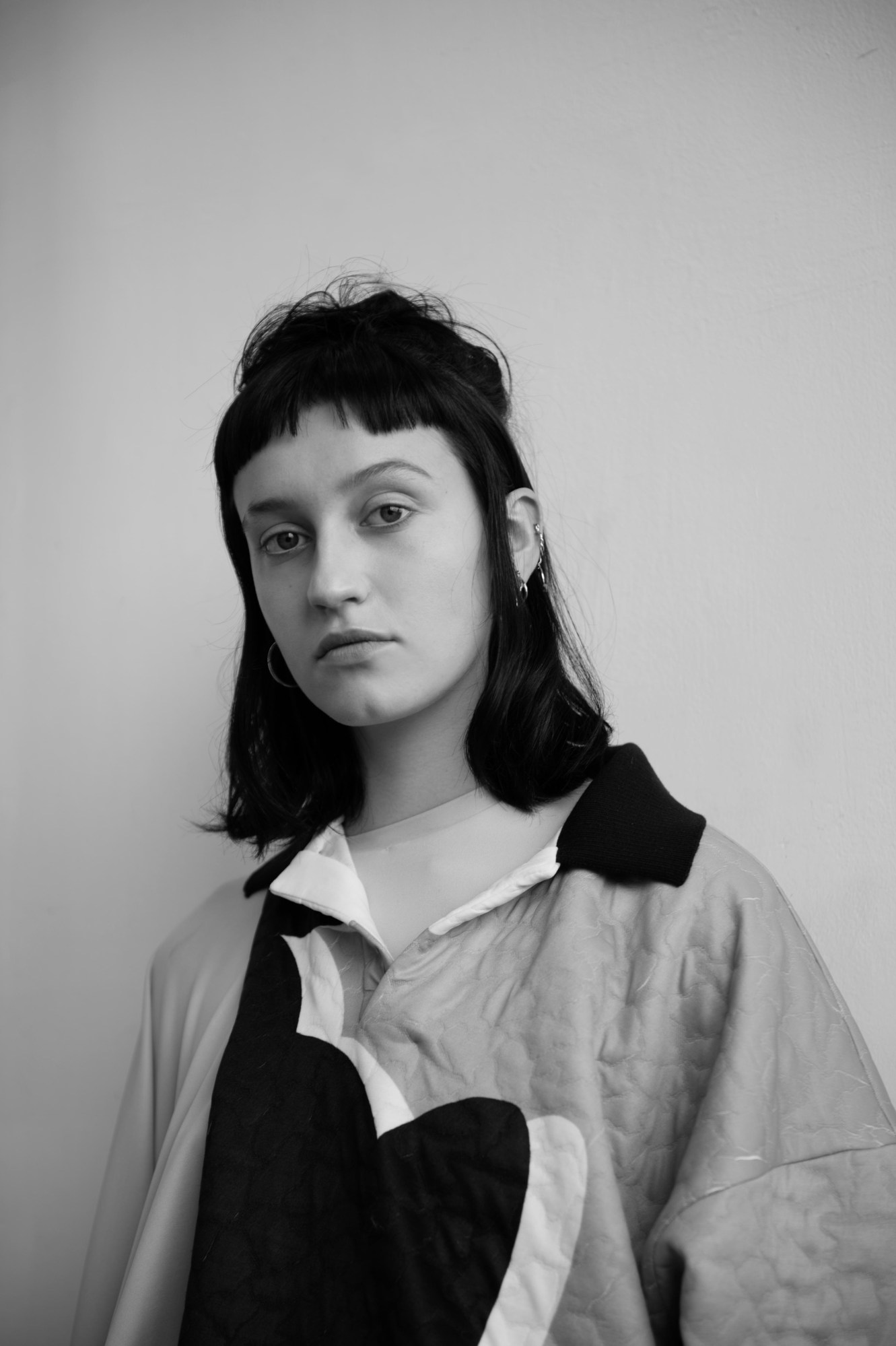Standing tall and assertive in his uniform of head-to-toe black, the first impression of Fabio Piras is that he is calm, collected and cool-headed. Much like his predecessor, Louise Wilson, Piras pushes his students to achieve the best results and his long-time presence at the college -as well as his status as Professor Wilson’s right-hand man – means he indubitably has the respect of all those around him, students and staff members alike.
“It’s never cool to say you’ve been with someone for 20 years,”chuckles Piras. “Sounds like an old couple.”
It’s hard to imagine Fabio adopting Wilson’s famously razor-tongued leadership — a method that arguably worked given that the MA Fashion course has produced a consistent array of talent — despite it having become entwined with the perception of the course and its approach.
“That’s one thing that I really want to talk about,” he says with a serious tone. “It really disturbs me how [Wilson’s] style, in terms of teaching, has become so tragically iconic. What people forget is that there was a context, always. The yelling was never yelling for the sake of yelling. The rudeness was actually very informed rudeness, it was educated rudeness. It was theatrical and if you were to listen to the rudeness, it was beautiful. There was an enormous amount of care because she never, ever let you walk out of this room without at least some sort of hook to hold onto. That is enormous.”
Prior to moving to London to study at St Martins, Piras led a tranquil life in his adopted home of Geneva where most of his family remains today. “What is there to say about Switzerland? You spend a life in a city with comfortable friends, comfortable family, comfortable house, comfortable school…therefore you were dead before you were even born. I left Switzerland in 1985 for a weekend. I went back a few weeks later to get my stuff and that was it. I’ve only been back to Switzerland twice in 30 years.”
A Londoner ever since, he showed his eponymous collection at London Fashion Week from 1994 to 2000, tutoring alongside Wilson from 1995. It was during this time that London’s global influence was rising and, since then, the college has inevitably grown in its size, outreach and even location.

“At the start of the 90s, British fashion was completely different and about to drastically change. With Louise heading the MA at CSM there we were exactly at that moment: the start of a new generation. It started with an attitude, a point of view, something to say. We worked very hard and Louise then worked harder for the course to be accepted onto the fashion week schedule. It was such a way-out idea, however we never sat around a table and said, ‘Let‘s create a bunch of designers who are going to become the names of the future.’It was never like that -more ‘let‘s kick ass.‘”
Now at the helm of the whole course, Piras is responsible for the admissions – but refuses to label the criteria for entry. “You can’t put a word on that,”he says. “I essentially look for the spark. The spark is something that you can’t define but it’s something that you immediately recognise. The spark is a talent that needs to be refined, managed, like McQueen at the beginning; it’s like a glow – you just see it. I love that. It gives meaning to what you do. But by working in the field for a while, you’re able to evaluate portfolios and not fall for fake portfolios ticking boxes, which seem to have become a trend.”
Fake portfolios?
“Well, they’re what I call fake portfolios,” Piras explains. “The digital world we live in is wonderful. The issue is not about being anti-digital or anti-Photoshop – all of those are tools that aid and enhance your creative point of view and your creative skills. The problem is when they start replacing your skills – then it’s fake. You can’t pretend that some piece of fabric that you dangle on a model, drape on a tailor’s dummy and then you take a photo of and edit with Photoshop is real. It is an illustrative process! Sometimes my students fall into this trap and go into some sort of seemingly perfect world of what I call fakery. They actually believe in it and it’s my job to ask, ‘How far in the fantasy are we? Where is the reality? How do you produce that? Does it exist somewhere?‘”
While the London Fashion Week schedule is crammed with alumnus of the MA Fashion course, it is notable that the Royal College of Art have been especially instrumental in driving the success of London’s menswear industry. About 50 per cent of the London Collections: Men schedule, including James Long, Matthew Miller, Astrid Andersen and Katie Eary, have earned MA Menswear degrees from the RCA.
“We at CSM need to watch it because we may think we’re the coolest cats on earth, but we’re not if we believe it,”he says, speaking of the CSM-RCA / womenswear-menswear balance. “I’m increasing the numbers of menswear on the MA. In fact, the applications for menswear this year are beyond anything that one could ever imagine. The energy of London Collections: Men and the fantastic success of Craig Green [who graduated from the MA in 2013] are partly responsible for that.”

On the subject of commerce versus creativity, Piras takes the stance that the clichéis overplayed and exaggerated and more focus should be paid to the garments as products. “Creativity and commerce go together,”says Piras. “Commercial is not about how boring and diluted you can be. Comme des Garçons survived for years as a Japanese conglomerate with various lines of fashion; now that‘s commercial. Commercial is about how you define and specify what you do and what you produce and communicate.”
Piras attributes the challenges to today’s designers and graduates to increases in the speed of creating, producing fashion and dissemination of imagery. “Fashion designing… It’s one quick shot and you have to repeat that intense creative process from start to finish several times in a year. For a young designer it can be overwhelming. We are part of a culture that needs you to successfully perform from the word ‘go’. You are constantly expected to come up with the next big thing, but the truth is that it takes time. A brand like Céline starts to look comfortably familiar, but it’s not because Céline produces comfortable work -it’s actually contemporary, at the edge and always very relevant but we get used to things at such a fast pace that everything quickly tumbles into fulfilment. It’s somewhat out of control.”
Industry issues aside, his response to questions about the future of the MA Fashion course is just as an educator’s should be. “People ask me about it and they think I’m going to give some kind of agenda of what I’m going to do, like someone in a political party giving you a broadcast. It’s very early days. If I were to answer you now, I think it would be very unfair for the students.”
He does, however, trust that London’s star will continue to shine. “I think the energy of 80s London is going to come back – back to a fashion that is a bit more genuine and creative; political; raw; less controlled and less perfect. Fashion should go back to that as well as claiming back the notions of craft and technique. I have people on the course like that and I hope these people will shine. London is a young city; you don’t grow old in London.”
Read the new issue of 1Granary, available in stores and online now

Credits
Text Kati Chitrakorn
Photography Patrick Bienert and Max von Gumppenberg
Styling Alister Mackie
